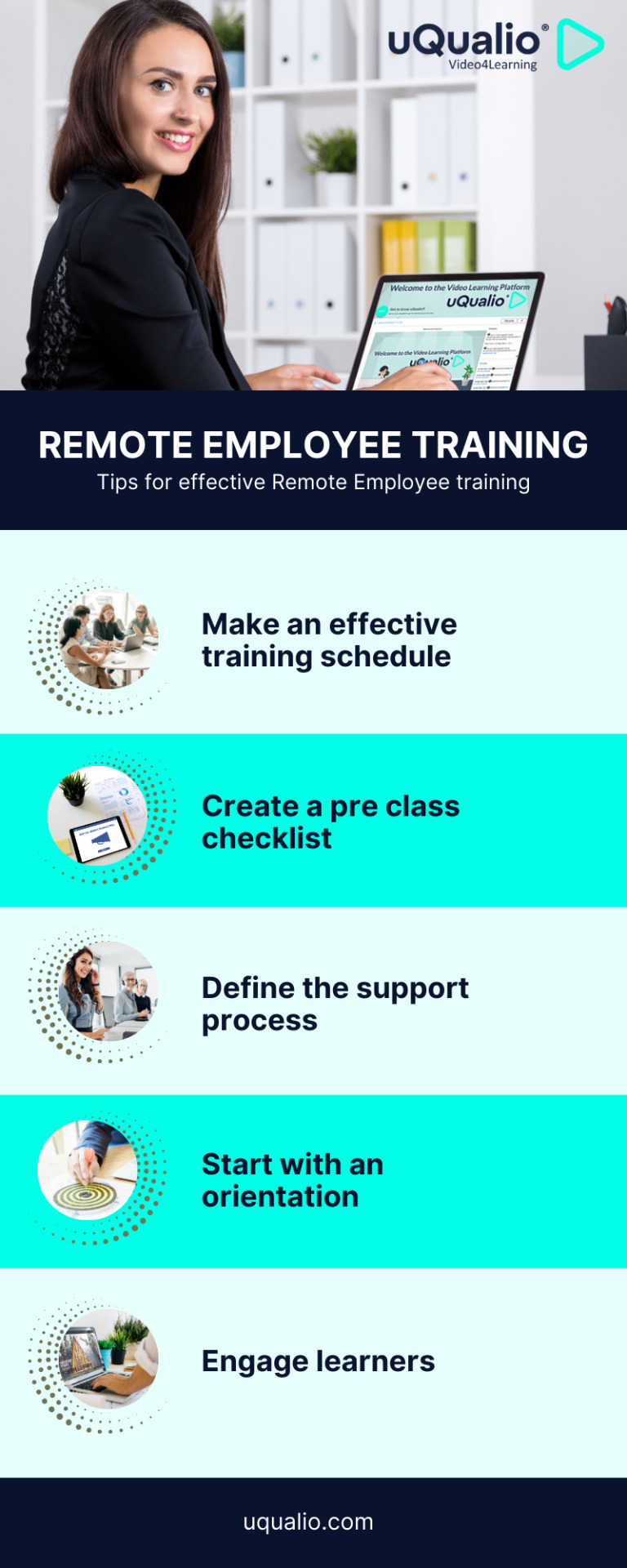#Employee training
Text

239 notes
·
View notes
Text




Recent Acquisition - Ephemera Collection
Coca-Cola Route Management Training, 1947-48.
No. 1 - Pete Martin, Route Manager
No. 2 - Choosing Winners
No. 3 - A Salesman is Developed
No. 4 - There's Gold in Each Outlet
71 notes
·
View notes
Text
Watch "employee_training.mp4" on YouTube
youtube
Employee_training.mp4
Credits to @studyingmoominvalley for voice acting and art
4 notes
·
View notes
Text
At Rizwa Hotels, we believe that investing in our employees’ professional development is critical to our success. That’s why we offer comprehensive training programs to help our staff reach their full potential. Our training programs cover a wide range of topics like technical skills, leadership development, and soft skills such as communication and teamwork.
2 notes
·
View notes
Text
Employee motivation refers to a company's employees' level of devotion, passion, and invention during the workday. It's as crucial as it is difficult to track; sustaining and enhancing workplace motivation can be a challenge for many businesses because not every activity will be exciting. Because motivation is vital for all individuals, professionals, and workers, taking this course will benefit anyone who wants to learn the theories and practices of employee motivation to improve their performance. For more details visit above link.
2 notes
·
View notes
Text

Customer Satisfaction Survey | Consumer Insights Research in UAE
Want to conduct Customer Satisfaction Surveys or consumer insights research? Boost your customer experience, happiness & loyalty with Researchers in Dubai, Abu Dhabi.
#Customer loyalty#Service delivery#Product optimization#Employee training#Feedback analysis#Customer retention#Brand reputation#Consumer behavior#Customer needs#Business growth
2 notes
·
View notes
Text
Ski area defendant got caught falsifying employee records by the plaintiff.
Wachusett Mountain Ski Area lied to the plaintiff about the training the employee in question in the lawsuit had received. The defendant ski area altered the records to make it look like the employee in question had received the requisite training when, in fact, he had not.
Hache v. Wachusett Mountain Ski Area, Inc., 99 Mass. App. Ct. 1126, 170 N.E.3d 345(Table) (Mass. App. 2021)
State:…

View On WordPress
#Chairlift#Employee Training#fraud upon the court#lying to the court#Massachusetts#Wachusett Mountain Ski Area
2 notes
·
View notes
Text

2 notes
·
View notes
Text
3 Ways to Stay In Compliance During COVID-19

The COVID-19 pandemic has presented unprecedented challenges for businesses worldwide. Beyond the immediate health concerns, companies must navigate a complex landscape of regulations and guidelines to ensure the safety of their employees and customers while maintaining operational continuity. Staying in compliance during this period is critical not only for legal reasons but also for fostering trust and ensuring the well-being of all stakeholders. Here are three essential strategies to help businesses stay in compliance during COVID-19.
1. Adhere to Government and Health Agency Guidelines
The first and most critical step to staying in compliance during the COVID-19 pandemic is to adhere to the guidelines and regulations set forth by government bodies and health agencies such as the Centers for Disease Control and Prevention (CDC), the World Health Organization (WHO), and local health departments. These guidelines are designed to minimize the spread of the virus and ensure public safety.
Monitoring Updates
COVID-19 regulations and guidelines are constantly evolving as new information about the virus emerges. It is crucial for businesses to stay informed about the latest updates. Designate a compliance officer or team responsible for monitoring announcements from relevant authorities. Regularly review official websites, subscribe to updates, and participate in industry-specific webinars and briefings.
Implementing Safety Protocols
Based on the guidelines provided by health agencies, businesses should implement comprehensive safety protocols. These may include:
Social Distancing: Reconfigure workspaces to ensure employees can maintain a safe distance from one another. Limit the number of people in common areas and consider staggered shifts or remote work arrangements where possible.
Personal Protective Equipment (PPE): Ensure that all employees have access to necessary PPE, such as masks, gloves, and face shields. Provide training on the proper use and disposal of PPE.
Sanitation and Hygiene: Increase the frequency of cleaning and disinfecting high-touch surfaces. Provide hand sanitizing stations and encourage regular hand washing. Display signage promoting good hygiene practices.
Health Screenings: Implement health screening procedures, such as temperature checks and symptom questionnaires, for employees and visitors. Establish protocols for managing suspected or confirmed cases of COVID-19.
Documenting Compliance Efforts
Maintain thorough documentation of all compliance efforts. This includes records of health screenings, cleaning schedules, PPE distribution, and employee training. Documentation not only helps demonstrate compliance during inspections but also supports internal reviews and continuous improvement efforts.
2. Foster Clear and Consistent Communication
Effective communication is essential for ensuring that all employees understand and adhere to COVID-19 compliance measures. Clear and consistent communication helps mitigate confusion, reduces anxiety, and fosters a culture of safety and responsibility.
Developing a Communication Plan
Create a comprehensive communication plan that outlines how information will be disseminated to employees, customers, and other stakeholders. The plan should specify the channels to be used, the frequency of updates, and the key messages to be conveyed.
Using Multiple Channels
Utilize a variety of communication channels to reach all employees, including email, intranet, virtual meetings, and physical postings. Ensure that communication is accessible to all employees, taking into account language barriers and varying levels of digital literacy.
Regular Updates
Provide regular updates on COVID-19 developments, changes to safety protocols, and any new compliance requirements. Regular communication helps keep everyone informed and reinforces the importance of adhering to safety measures.
Encouraging Feedback
Encourage employees to ask questions and provide feedback on the implemented measures. Create a safe environment where employees feel comfortable voicing their concerns. This feedback loop can help identify potential issues and improve compliance efforts.
3. Leverage Technology for Compliance Management
Technology can play a significant role in helping businesses stay in compliance with COVID-19 regulations. By leveraging digital tools and platforms, companies can streamline compliance processes, enhance monitoring, and ensure accurate record-keeping.
Health Monitoring Apps
Consider implementing health monitoring apps that allow employees to self-report symptoms, log temperatures, and receive notifications about potential exposures. These apps can help quickly identify and respond to health risks, ensuring timely interventions.
Digital Training Platforms
Use digital training platforms to educate employees about COVID-19 safety protocols and compliance requirements. Online training modules can be updated regularly to reflect the latest guidelines and can be easily accessed by employees, ensuring they stay informed and compliant.
Contact Tracing Solutions
Implement contact tracing solutions to monitor interactions within the workplace. Digital contact tracing tools can help quickly identify and notify individuals who may have been exposed to COVID-19, facilitating timely isolation and reducing the risk of further transmission.
Compliance Management Systems
Adopt comprehensive compliance management systems that integrate various aspects of COVID-19 compliance, from health screenings and PPE inventory management to documentation and reporting. These systems can automate many compliance tasks, ensuring accuracy and efficiency.
Conclusion
Staying in compliance during the COVID-19 pandemic is a complex but essential task for businesses. By adhering to government and health agency guidelines, fostering clear and consistent communication, and leveraging technology, companies can navigate these challenges effectively. These strategies not only ensure legal compliance but also promote the health and safety of employees and customers, helping businesses maintain trust and resilience in uncertain times.
Businesses that prioritize compliance and proactive safety measures will be better positioned to protect their workforce, sustain operations, and contribute to the broader effort to control the spread of COVID-19. As the situation continues to evolve, ongoing vigilance and adaptability will be key to staying compliant and safeguarding the well-being of all stakeholders.
#COVID-19 Compliance#Government Guidelines#Health Agency Regulations#Safety Protocols#Social Distancing#Personal Protective Equipment (PPE)#Sanitation and Hygiene#Health Screenings#Compliance Documentation#Communication Plan#Employee Training#Clear Communication#Regular Updates#Employee Feedback#Technology for Compliance#Health Monitoring Apps#Digital Training Platforms#Contact Tracing#Compliance Management Systems#Workplace Safety#Operational Continuity
0 notes
Text
Training and Development Process
The training and development process involves identifying needs, designing programs, delivering training, and evaluating outcomes. This structured approach enhances employee skills and knowledge, driving performance improvement and supporting organizational objectives. Click the link for more information: https://www.hrhelpboard.com/training-development/training-and-development-process.html
#training and development process#employee training#skill development#training needs assessment#employee development
0 notes
Text

Feeling stuck in your career?
Don't worry, growth isn't just about promotions and raises! It's about feeling challenged, fulfilled, and constantly learning.
Here's a sneak peek at 5 tips from our latest blog to help you take charge of your career growth in 2024:
1️⃣ Set SMART Goals (Specific, Measurable, Achievable, Relevant, and Time-bound)
2️⃣ Seek Feedback to Identify Your Strengths & Weaknesses
3️⃣ Celebrate Your Wins (Big & Small)!
4️⃣ Find Your Skill Gaps & Conquer Them!
5️⃣ Take Action: Level Up Your Skills Through Courses, Mentorship & More!
Plus, get our FREE Employment Skill Tracker to monitor your progress and stay motivated!
➡️ Click on the source link to read the article and download the FREE employment skill tracker.
0 notes
Text
Empowering Teams Through Effortless Development: Why Teamioed is the Answer
In today's dynamic business landscape, fostering a skilled and engaged workforce is crucial for sustainable success. But traditional employee development programs can be expensive, time-consuming, and often fail to translate theory into real-world application. This is where Teamioed steps in, offering a revolutionary approach to equip your managers and teams with the tools they need to thrive.

Teamioed: A Powerful Learning Platform Built for Busy Teams
Teamioed is a comprehensive learning platform designed specifically for busy managers and their teams. We understand that carving out dedicated training time can be challenging. That's why our core philosophy revolves around making employee development effortless. Our platform provides a library of ready-made, off-the-shelf soft skills courses, each meticulously crafted to deliver a dynamic and engaging learning experience within the confines of a regular team meeting (typically 45 minutes to 1 hour).
Here's what sets Teamioed apart:
Focus on Soft Skills: We target the essential soft skills that fuel high-performing teams, including communication, teamwork, problem-solving, and emotional intelligence. These skills are vital for building trust, fostering collaboration, and navigating complex situations.
Minimal Preparation: Our courses are designed for plug-and-play use. Managers don't need to spend hours researching or developing content. Teamioed provides everything you need – facilitation guides, engaging activities, and downloadable resources – to guide a productive learning session.
Empowered Managers: Teamioed equips managers to become effective learning facilitators within their teams. This not only saves time and resources but also fosters a sense of ownership and accountability for skill development.

Technology-Driven Learning: Our interactive platform makes learning engaging and accessible. Teamioed leverages multimedia elements, polls, and breakout discussions to keep participants actively involved.
Cost-Effective Solution: Teamioed offers a scalable and cost-effective way to invest in employee development. Our subscription model allows you to access a vast library of courses without breaking the bank.
The Benefits of Investing in Teamioed
By incorporating Teamioed into your development strategy, you'll witness a range of positive outcomes for your organization:
Enhanced Team Performance: By honing soft skills, teams become more effective communicators, collaborate seamlessly, and solve problems efficiently. This translates directly to improved project outcomes and increased productivity.
Boosted Employee Engagement: Employees who feel their skills are being developed are more engaged and invested in their work. Teamioed's interactive learning format fosters participation and creates a positive learning environment.
Stronger Company Culture: Developing soft skills strengthens interpersonal relationships within teams, promotes trust, and fosters a collaborative work environment. This leads to a more positive company culture with higher employee morale.
Reduced Training Costs: Teamioed eliminates the need for expensive external trainers or lengthy custom-designed programs. Our cost-effective subscription model allows you to deliver impactful training without exceeding your budget.

Getting Started with Teamioed
Teamioed is designed to be a seamless addition to your existing workflow. Getting started is simple:
Explore Our Course Library: Browse our extensive library of soft skills courses to identify those that align with your team's needs. We offer a variety of topics, from communication and conflict resolution to time management and leadership.
Subscribe to a Plan: Choose a subscription plan that best suits the size and needs of your organization. We offer flexible options to cater to a wide range of budgets.
Assign Courses to Teams: Select the courses you want your managers to deliver to their teams.
Facilitate and Learn: Managers can access the course materials, facilitation guides, and resources within the platform. With minimal preparation, they can lead a dynamic and engaging learning session during their next team meeting.
Teamioed: The Future of Effortless Employee Development
Incorporating Teamioed into your employee development strategy unlocks a new era of effortless learning. Our platform empowers managers, equips teams with essential soft skills, and ultimately fuels organizational success.
Ready to take your team's performance to the next level? Contact Teamioed today and let's discuss how we can help you build a thriving workforce.
0 notes
Text

uQualio is an innovative Employee Training platform revolutionizing how companies educate their workforce. With user-friendly interface and customizable content, uQualio offers a seamless learning experience. Its interactive features engage employees, ensuring better retention. From onboarding to skill enhancement, uQualio caters to diverse training needs. Track progress effortlessly with analytics. With uQualio, empower your team with knowledge anytime, anywhere.
#video learning#lms platform#online learning#elearning#training#employee training#employees#employee management software#remote training
0 notes
Text
A Culture of Continuous Learning: The Role of Corporate Training Programs
Nowadays, staying competitive and adaptable is crucial for organizations to thrive. To achieve this, companies must create a culture of continuous learning, where employees are empowered to expand their knowledge, acquire new skills, and embrace professional growth. We will explore the pivotal role of corporate training programs in fostering a culture of continuous learning within organizations. Let us delve into the strategies and benefits that such programs offer.

Building a Foundation: Assessing Training Needs
Before implementing a successful corporate training program, it is essential to identify the specific training needs of employees and teams. By conducting thorough assessments, organizations can gain insights into skill gaps and areas that require improvement. This foundation ensures that training programs are designed to address these specific needs, maximizing their effectiveness. Tailoring the training content to the unique requirements of employees leads to higher engagement, relevance, and skill development.
Embracing Technology: Blending Learning Methods
In the digital age, technology plays a pivotal role in corporate training programs. Integrating traditional classroom sessions with innovative e-learning platforms, virtual learning environments, and mobile applications can enhance learning experiences. By embracing technology, companies can provide flexibility and convenience for employees to access training materials anytime, anywhere. Moreover, incorporating multimedia elements such as videos, interactive modules, and gamified assessments creates engaging and immersive learning experiences.
Empowering Employees: Self-Directed Learning
A culture of continuous learning thrives when employees are encouraged and empowered to take ownership of their personal and professional development. Corporate training programs should offer opportunities for self-directed learning, giving employees the autonomy to choose training modules that align with their goals and interests. Offering a diverse range of topics and formats, such as webinars, podcasts, and online courses, empowers employees to explore their areas of passion and develop skills that are relevant to their roles.
Providing Ongoing Support: Mentoring and Coaching
Corporate training programs should not be limited to one-time events or courses. To foster a culture of continuous learning, organizations need to provide ongoing support through mentoring and coaching initiatives. Pairing experienced mentors with employees can create a knowledge-sharing ecosystem, where insights and best practices are passed down to new team members. Regular feedback and coaching sessions encourage employees to reflect on their learning journey, set goals, and continuously improve their skills.
Recognizing and Rewarding Learning Achievements
To reinforce the importance of continuous learning and encourage active participation, organizations should implement recognition and reward systems for employees who demonstrate a commitment to their professional development. By celebrating learning achievements, whether through certificates, badges, or internal recognition programs, companies cultivate a positive learning environment. Recognizing employees' efforts not only boosts morale but also motivates individuals to pursue further learning opportunities and share knowledge with their peers.
Evaluating and Measuring Success: Continuous Improvement
Corporate training programs must be evaluated to measure their impact and ensure continuous improvement. Gathering feedback from participants, conducting assessments, and tracking key performance indicators will enable organizations to gauge the effectiveness of training initiatives. This evaluation process should be ongoing, allowing companies to make necessary adjustments, refine training content, and implement new strategies to better align with evolving business needs.
In conclusion, creating a culture of continuous learning is a vital strategy for organizations seeking long-term success in today's dynamic business world. Corporate training programs play a pivotal role in fostering this culture by building a solid foundation, embracing technology, empowering employees, providing ongoing support, recognizing achievements, and evaluating success. By investing in robust training initiatives, companies can unlock the potential of their employees, drive innovation, and stay ahead of the curve in an ever-changing marketplace.
Remember, the journey toward a culture of continuous learning is an ongoing process that requires commitment and adaptation. By prioritizing professional development and instilling a growth mindset, organizations can create an environment where learning becomes a collective endeavor and a catalyst for success. Contact the Confederation of International Talents (CIT) to join the best quality corporate training program in Mauritius.
0 notes
Text
Three Essential Basics for an Effective Microlearning Lesson

Microlearning has become an indispensable tool in modern education and corporate training, offering a streamlined, efficient approach to skill development and knowledge retention. By delivering information in bite-sized, focused segments, microlearning caters to the fast-paced, on-demand needs of today’s learners. However, to create truly effective microlearning lessons, certain foundational principles must be adhered to. Here are three never-to-miss basics for crafting impactful microlearning lessons.
1. Clear and Focused Objectives
The cornerstone of any effective microlearning lesson is a clear and focused objective. Each lesson should target a specific, well-defined goal that aligns with the overall learning outcomes. Here’s how to ensure your objectives are clear and focused:
Define Specific Learning Goals
Each microlearning module should address one primary concept or skill. Avoid trying to cover too much information in a single session. For example, instead of a broad topic like "Effective Communication," focus on a specific aspect such as "How to Give Constructive Feedback."
Use Actionable Language
Frame your objectives in actionable terms that describe what the learner will be able to do after completing the lesson. Use verbs like "identify," "demonstrate," "apply," or "analyze." For example, "By the end of this lesson, you will be able to identify the key components of effective feedback."
Align with Learner Needs
Ensure that the objectives are relevant to the learners' roles and responsibilities. Conduct a needs analysis to understand what skills or knowledge gaps exist and tailor your objectives accordingly. This relevance increases motivation and engagement, as learners see the direct application of what they are learning.
2. Engaging and Interactive Content
Engagement is critical in microlearning. The brevity of microlearning lessons demands content that captures and maintains the learner’s attention. Interactive elements play a significant role in achieving this engagement.
Use Multimedia Elements
Incorporate a variety of multimedia elements such as videos, animations, infographics, and audio clips. Multimedia not only makes the content more interesting but also caters to different learning styles. For instance, a short video demonstration can be more effective than a lengthy text description.
Include Interactive Activities
Interactive activities such as quizzes, simulations, and drag-and-drop exercises encourage active participation. These activities help reinforce learning by prompting learners to apply what they’ve just learned. For example, after a lesson on email etiquette, include a quiz where learners identify proper and improper email examples.
Encourage Real-World Application
Design activities that simulate real-world scenarios. This contextual learning helps learners understand how to apply their new knowledge or skills in their daily tasks. For example, a lesson on customer service skills could include a role-playing exercise where the learner must respond to a customer complaint.
3. Reinforcement and Assessment
To ensure that learning is retained and can be applied, it’s crucial to include elements of reinforcement and assessment within your microlearning lessons.
Utilize Spaced Repetition
Spaced repetition involves reviewing information at increasing intervals over time. Incorporate this technique by revisiting key points in subsequent lessons or through periodic review sessions. This helps move information from short-term to long-term memory. For instance, if the microlearning module is part of a larger training program, schedule follow-up mini-quizzes on the key points a week and a month after the initial lesson.
Provide Immediate Feedback
Immediate feedback on assessments helps learners understand what they’ve mastered and where they need to improve. Use quizzes and interactive activities to provide instant feedback. For example, after a quiz question, provide explanations for both correct and incorrect answers to reinforce learning.
Track Progress and Assess Understanding
Use assessments to gauge the learner’s understanding and retention of the material. This could include pre- and post-assessments to measure learning gains or practical assignments to demonstrate skill application. For example, a practical assessment after a lesson on data analysis could involve learners analyzing a data set and presenting their findings.
Integrating the Basics into a Microlearning Strategy
To effectively integrate these basics into your microlearning strategy, follow these steps:
Step 1: Plan and Structure Your Lessons
Start by planning the overall structure of your microlearning program. Break down the content into small, manageable modules, each with its own clear objective. Ensure that the modules follow a logical sequence that builds on previous knowledge.
Step 2: Develop Engaging Content
Create content that is engaging and interactive. Use multimedia elements to cater to different learning styles and incorporate interactive activities to maintain interest and promote active learning. Ensure that each piece of content aligns with the defined objectives.
Step 3: Implement Reinforcement Techniques
Plan for reinforcement by scheduling spaced repetition sessions and including regular assessments. Use quizzes, flashcards, and review sessions to keep the material fresh in learners’ minds. Provide immediate feedback to help learners understand their progress and areas for improvement.
Step 4: Monitor and Evaluate Effectiveness
Track learners’ progress through assessments and feedback mechanisms. Use this data to evaluate the effectiveness of your microlearning program and make necessary adjustments. Regularly update the content to keep it relevant and aligned with the learners' evolving needs.
Examples of Effective Microlearning Lessons
To illustrate these principles, here are a few examples of effective microlearning lessons:
Example 1: Customer Service Training
Objective: By the end of this lesson, learners will be able to handle common customer complaints effectively.
Content: A short video demonstrating how to handle different types of customer complaints, followed by an interactive role-playing exercise where learners choose the best responses to simulated complaints.
Reinforcement: A quiz one week later with scenarios similar to those in the role-playing exercise, providing immediate feedback on the answers.
Example 2: Software Skills Training
Objective: By the end of this lesson, learners will be able to use basic functions of a new software tool.
Content: A series of short video tutorials demonstrating each function, with interactive simulations where learners practice using the software.
Reinforcement: Flashcards and quizzes provided periodically to reinforce key functions and shortcuts.
Example 3: Compliance Training
Objective: By the end of this lesson, learners will understand the company’s compliance policies.
Content: An infographic summarizing the policies, followed by a series of scenario-based questions where learners apply the policies to real-world situations.
Reinforcement: Regular email reminders with quick tips and follow-up quizzes to reinforce the policies.
Conclusion
Creating effective microlearning lessons involves more than just breaking down content into smaller pieces. It requires clear and focused objectives, engaging and interactive content, and reinforcement through repetition and assessment. By adhering to these three never-to-miss basics, educators and trainers can design microlearning lessons that not only capture learners' attention but also ensure long-term retention and application of knowledge.
#Microlearning#Learning Objectives#Focused Goals#Engaging Content#Interactive Learning#Multimedia Elements#Quizzes#Real-World Application#Active Participation#Spaced Repetition#Immediate Feedback#Assessment#Knowledge Retention#Learning Retention Techniques#Effective Training Design#Bite-Sized Learning#Modular Content#Interactive Activities#Training Program#Learning Management Systems (LMS)#Employee Training#Skill Development#Pre- and Post-Assessments#Feedback Mechanisms#Practical Assignments#Learning Outcomes#E-learning#Training Effectiveness#Cognitive Science#Memory Reinforcement
0 notes